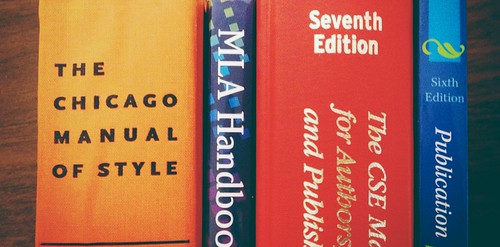There is no big secret in creating an effective term paper. Rather,
it is essentially a question of learning to organize your time and resources
efficiently. Alternatively, you could ask some paper writing service for help with research paper and skip everything written in here,
nobody is going to blame you. The steps below can serve as a guide in writing
your next research paper.
1.
Start early
Start working on your paper as soon as the task is handed out.
Take advantage of all the time you can get to undertake your research and
writing in order to meet the due date. If you delay to the last minute, you may
encounter some difficulty finding library resources, mainly if other learners
are researching a similar topic. This can be a source of stress for you as
other tasks pile up.
2.
Select a topic
While keeping in mind the rules that your tutor has put down
for the task in terms of length, topic, types of reference sources, and so on,
pick a subject that interests you. Your next step after that should be to check
and confirm with the library that there is adequate reference material to back
your selection up. If not, get rid of the topic and pick a more realistic one
that you can support adequately.
3.
Narrow the topic
Do not tumble into the habit of picking a subject that is so
wide that requires you to compose a book to do it justice. Instead, limit your subject
to one precise feature that you will be capable of handling systematically
within the set limits of your paper. Related reading in a general or specific
encyclopedia can provide you with a clue as to the topic's restrictions and
divisions. A librarian can also direct you to a suitable fact file that can
help you narrow your topic to a specific need. Also, you can refer to research
guides by topic for ideas on narrowing the topic.
4.
Compose a tentative outline
Randomly consolidate your thoughts and come up with an
outline that will provide you with direction during the research and
note-taking process. Such an outline keeps you focused on what to extract
during the research process.
5.
Read and review your documentation
For every single source that you refer to, be sure to have
all the materials needed to reference in your checklist. Accurateness during
this step will save you the worry of having to re-trace your steps when you are
texting your ultimate draft. In case of a book, note down the writer, heading,
place of publication, editor and copyright date. In case of an article from a
periodical, take note of the writer, heading of the article, heading of the
journal, book and issue number, date and complete page numbers. For a network
document, take down the writer, heading, date, URL or web address and date referred.
6.
Draft a final outline
Map out your tactic by creating a complete sentence summary.
First, create a thesis statement. This one sentence declaration is the most
significant of your entire research paper so be sure to phrase it cautiously. A
thesis statement openly communicates the topic of your paper and the tactic you
are going to take. It is the regulatory factor to which all info that follows
must share. Secondly, collect and regroup your notes according to specific features
in your subject till you find an order that appears logical. This can aid as
the foundation for your outline. Finally, you need to proofread your work.

